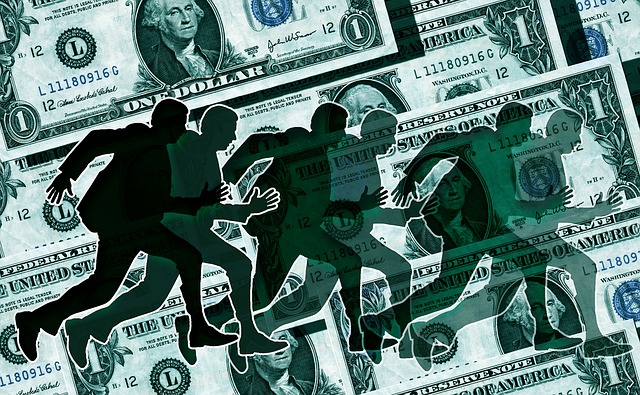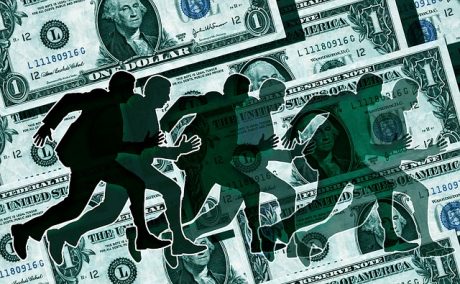 The last four months have been an unending nightmare for the U.S. economy. Businesses are shutting down at a pace that we have never seen before in American history, the “retail apocalypse” has reached an entirely new level that none of the experts were anticipating prior to this pandemic, and we are in the midst of the greatest spike in unemployment that the United States has ever experienced. On Thursday, we learned that another 1.3 million Americans filed new claims for unemployment benefits last week, and that number has now been above one million for 16 consecutive weeks. Things were supposed to be “getting back to normal” by now, buy that hasn’t happened. Instead, we continue to see a tsunami of job losses that is absolutely unprecedented in American history.
The last four months have been an unending nightmare for the U.S. economy. Businesses are shutting down at a pace that we have never seen before in American history, the “retail apocalypse” has reached an entirely new level that none of the experts were anticipating prior to this pandemic, and we are in the midst of the greatest spike in unemployment that the United States has ever experienced. On Thursday, we learned that another 1.3 million Americans filed new claims for unemployment benefits last week, and that number has now been above one million for 16 consecutive weeks. Things were supposed to be “getting back to normal” by now, buy that hasn’t happened. Instead, we continue to see a tsunami of job losses that is absolutely unprecedented in American history.
When we look back at the old peaks for unemployment claims, they almost seem laughable compared to what we are experiencing now…
The highest prior weekly total for new unemployment claims was 695,000, in October 1982, according to Labor Department data. During the Great Recession, the country’s last downturn, weekly claims peaked at 665,000, in March 2009.
For those that aren’t old enough to remember, the recession of the early 1980s and the recession of 2008 and 2009 were both really, really painful.
But of course they weren’t anything like this.
Sometimes it is hard to believe that the numbers have gotten so bad. According to Wolf Richter, the number of continuing claims that were filed last week under all state and federal unemployment programs is the highest that we have ever seen…
The total number of people who continued to claim unemployment compensation in the week ended July 4 under all state and federal unemployment insurance programs, including gig workers, jumped by 1.41 million people, to 32.92 million (not seasonally adjusted), the Department of Labor reported this morning. It was the highest and most gut-wrenching level ever.
The number of people who continue to receive state unemployment insurance (blue columns) has been ticking down, as more people got their jobs back than newly unemployed flooded the state unemployment systems. But the number of people claiming federal unemployment insurance, including gig workers under the Pandemic Unemployment Assistance (PUA) program, continues to surge (red columns), which causes the total number of people claiming unemployment benefits under all programs to rise
Up to this point, the emergency measures that Congress put in place to help unemployed workers have definitely eased the pain for millions upon millions of people that have lost their jobs, but a number of those emergency measures are about to expire…
Several benefits were developed in March to help ease the financial strains on Americans during the coronavirus pandemic. Those are set to come to an end before July 31, which could impact 20 million Americans, MarketWatch reports. The CARES Act, which was signed into law on March 27 by President Donald Trump, provided benefits like enhanced unemployment payments to supplement lost income from layoffs. It also includes a clause to delay evictions for 120 days.
Of course Congress could choose to extend some or all of the elements in the CARES Act, but that would mean borrowing and spending more giant mountains of money that we do not currently have.
Meanwhile, we are seeing businesses fail at a rate that is absolutely staggering.
According to the Washington Post, more than 100,000 businesses have permanently closed their doors during this pandemic, and Bloomberg just posted an article about 110 major companies that have declared bankruptcy here in 2020…
Retailers, airlines, restaurants. But also sports leagues, a cannabis company and an archdiocese plagued by sex-abuse allegations. These are some of the more than 110 companies that declared bankruptcy in the U.S. this year and blamed Covid-19 in part for their demise.
Sadly, the bankruptcy announcements just keep on coming.
This week, we learned that Brooks Brothers has filed for bankruptcy protection…
The coronavirus pandemic has now claimed one of the country’s oldest and most prestigious retailers.
Brooks Brothers — pioneer of the polo and uniform of the polished prepster — filed for Chapter 11 bankruptcy court protection from creditors on Wednesday, as it continues to search for a buyer.
That hit me particularly hard, because I have had Brooks Brothers shirts in my closet ever since I was a young man.
They have always made great products, and I just assumed that they would always be around.
Of course lots of other iconic retailers are failing as well. Before too long, naming the major retailers that are still operating successfully may be easier than trying to name the vast number of major retailers that have gone belly up.
Store closings are happening fast and furious these days, and that isn’t likely to change any time soon. Starbucks just announced that they will be closing 400 locations, Dunkin’ Donuts just announced that they will be closing 450 locations, and Bed Bath & Beyond has increased the number of stores that they will be closing to approximately 200…
Bed Bath & Beyond (BBBY) announced Wednesday that it plans to close roughly 200 stores in the next two years.
The retail chain — which also operates Buybuy Baby, Christmas Tree Shops and Harmon Face Values — said it would be mainly closing Bed Bath & Beyond stores, starting later this year. The announcement came as the company released its quarterly earnings report on Wednesday.
If you are still not convinced that the retail industry is facing an unprecedented cataclysm, I think that the following list will do the trick.
Forbes has been tracking the major store closing announcements of 2020, and their list was recently shared by Zero Hedge…
Forbes’ Store Closure List In 2020
Chuck E Cheese: 54 U.S. stores (bankruptcy)
Destination Maternity: 90 stores (bankruptcy)
GNC: 1,200 stores (bankruptcy)
J. Crew: 54 stores (bankruptcy)
JCPenney JCP: 154 stores (bankruptcy)
K-Mart: 45 stores (bankruptcy)
Modell’s Sporting Goods: 153 stores (bankruptcy)
Neiman Marcus (Last Call): 20 stores (bankruptcy)
Papyrus: 254 stores (bankruptcy)
Pier 1 Imports PIR: 936 stores (bankruptcy)
Sears: 51 stores (bankruptcy)
Signet Jewelers SIG: 232 stores
Stage Stores: 738 stores (liquidating)
Tuesday Morning: 230 stores (bankruptcy)
***
AC Moore: 145 stores
Art Van Furniture: 190 stores
AT&T: 250 stores
Bath & Body Works: 50 stores
Bed Bath & Beyond: 44 stores
Bloomingdale’s: 1 store
Bose: 11 stores
Chico: 100 stores (estimated)
Children’s Place: 200 stores
Christopher Banks: 30-40 stores
CVS Pharmacy: 22 stores
Earth Fare: 50 stores
Express: 66 stories
Forever 21: 15 stores (estimated)
GameStop GME: 320 stores
Gap: 230 stores
Guess: 100 stores
Hallmark: 16 stores
Lord & Taylor: 30 or 40 stores
Lowe’s Canada: 34 stores
Lucky Market: 32 stores
Macy’s M: 125 stores (over 3 years)
Microsoft: 77 stores
New York & Co: 27 stores
Nordstrom: 16 stores
Office Depot: 90 stores
Olympia Sports: 76 stores
Party City: 21 stores
Starbucks SBUX: 400 stores (over 18 months)
Victoria’s Secret: 250 stores
Walgreen: 100 stores (estimated)
Walmart: 2 stores
Wilson Leather & G.H. Bass: 199 stores
Zara: 1,000 stores worldwide (over 2 years)
This week, the number of newly confirmed cases of COVID-19 has surged to the highest level that we have seen yet, and that means that fear of COVID-19 is going to continue to paralyze economic activity in the United States for the foreseeable future.
That means that many more businesses will be shutting their doors, there will be many more bankruptcies, and millions more Americans will be losing their jobs.
This is what an economic collapse looks like, and it is just getting started.
About the Author: I am a voice crying out for change in a society that generally seems content to stay asleep. My name is Michael Snyder and I am the publisher of The Economic Collapse Blog, End Of The American Dream and The Most Important News, and the articles that I publish on those sites are republished on dozens of other prominent websites all over the globe. I have written four books that are available on Amazon.com including The Beginning Of The End, Get Prepared Now, and Living A Life That Really Matters. (#CommissionsEarned) By purchasing those books you help to support my work. I always freely and happily allow others to republish my articles on their own websites, but due to government regulations I need those that republish my articles to include this “About the Author” section with each article. In order to comply with those government regulations, I need to tell you that the controversial opinions in this article are mine alone and do not necessarily reflect the views of the websites where my work is republished. The material contained in this article is for general information purposes only, and readers should consult licensed professionals before making any legal, business, financial or health decisions. Those responding to this article by making comments are solely responsible for their viewpoints, and those viewpoints do not necessarily represent the viewpoints of Michael Snyder or the operators of the websites where my work is republished. I encourage you to follow me on social media on Facebook and Twitter, and any way that you can share these articles with others is a great help. During these very challenging times, people will need hope more than ever before, and it is our goal to share the gospel of Jesus Christ with as many people as we possibly can.















